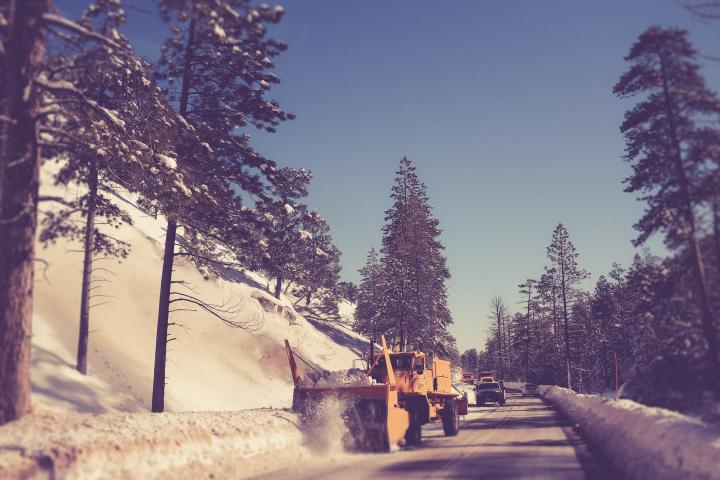Winter Driving Safety
Driving in any season can be demanding due to traffic, local geography, driver experience, road construction, and time of day. It can be more of a challenge in winter because all existing hazardous conditions are magnified by rain, fog, snow, ice, ability to brake, condition of vehicle, visibility, and other drivers. We will review how one can drive safely by planning, preparing and using safe driving practices to counteract existing winter driving conditions and unsafe driving by others.
When driving in winter, the driver must account for extra travel time and plan accordingly. In addition to routinely scheduled maintenance, at beginning of trip: check battery, tire tread, and windshield wipers, put no-freeze fluid in the washer reservoir, and check antifreeze. Clear wind shield and windows before leaving the driveway or parking lot. The driver will assure that every glass surface is clear and transparent by using a snowbrush, an ice scraper or a towel. Side-view mirrors and all lights should be brushed and cleared as well. Since it is winter, he/she will need just as much, if not more, visibility in poor conditions because of increased stopping distances and other drivers that fail to adapt to the slick road surface. The smart driver takes it a step further, though, and clears off the snow and ice from vehicle and dew from windows. Failing to do so could result in the snow left on the roof either sliding down and blocking the windshield as driver is slowing down or flying off onto someone else's windshield, causing them to crash into driver’s or another vehicle. Uncleared windshield and windows greatly reduce visibility and prevents driver from seeing pedestrians, and objects that may be in the way. Lastly, before beginning travel, driver must be familiar with the maps/ directions, and let others know the route and travel schedule: departure and projected arrival times. This is very important in case of an emergency and if there is a delay along the way.
According to State Farm and OSHA when driving in...
Before starting your drive: Buckle up and use child safety seats properly. Never place a rear-facing infant seat in front of an air bag. Children 12 and under are much safer in the back seat.
- Heavy rain: Do not slam the brakes or suddenly correct steering. When the vehicle begins hydroplaning, ease off the gas pedal and steer straight until the vehicle is again controlled.
- Dense fog: Use fog lights. If the vehicle has front fog lights, they can assist in road illumination and increase vehicle visibility to other drivers. Some vehicles have rear fog lights, which help those behind you see your vehicle from farther away. Keep headlights on low beam (high-beams just reflect off the fog and don't illuminate the road ahead), and hug the right edge of the road. If you need to pull over, move far away from traffic and turn off your lights: Other drivers might see taillights and think you're in the traffic lane, which can lead to them going off the road.
- Icy conditions: Sharp turns or corrections must not be made. and avoid slamming on the brakes-it could cause skidding. When approaching a hill, wait for the front vehicle to reach the top before ascending. Drive steadily up the hill but avoid going too fast; that could cause you to swerve.
- Snowy weather or on snow-covered roads: Don't pass snowplows or sanding trucks - they are likely trying to clear the road ahead. Approach intersections slowly, and brake gently to avoid skidding. If you slide, turn your steering wheel in the direction your vehicle is sliding.
- Stopped or Stalled? Stay in your car, don’t overexert, put bright markers on the antenna or windows and shine dome light, and, if you run your car, clear exhaust pipe and run it just enough to stay warm.
And in all winter weather settings, avoid using cruise control, drive slower than usual, and leave plenty of stopping distance between your vehicle and the one in front of you.
Planning and preparation are critical for safe driving. Additionally, be cautious and driving defensively when on the road in winter are key in staying safe whether the activity is for work or off the job.
